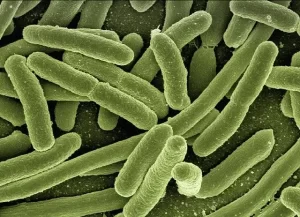“Ancient” chemotherapeutics: platinum-based drugs for advanced breast cancer
“Ancient” chemotherapeutics: platinum-based drugs for advanced breast cancer
“Ancient” chemotherapeutics: platinum-based drugs for advanced breast cancer. The latest statistics released by the International Agency Research on Cancer (IARC, International Agency Research on Cancer) under the World Health Organization this year show that in 2020, the number of newly diagnosed breast cancer cases worldwide reached 2.3 million, exceeding the number of new cases of lung cancer (2.21 million) for the first time . This means that breast cancer has become the most common type of cancer diagnosis in the world.

Over the years, with the continuous research and development of new drugs, the treatment of breast cancer has gradually become refined and individualized. The latest research directions and trends are constantly clarifying the pathogenesis of different breast cancer patients, and formulating more targeted diagnosis and treatment programs to reduce the mortality of breast cancer.
But for patients with advanced breast cancer, chemotherapy is still one of the most important treatments. Compared with new methods such as targeted therapy and immunotherapy, platinum-based drugs, which have undergone nearly 40 years of development, can be regarded as “old”, but they also have important clinical application value.
The use of platinum drugs is not limited to triple-negative breast cancer
Platinum-based drugs were developed in the 1960s and are the most commonly used chemotherapeutic drugs in clinical practice. They have good anti-tumor activity against a variety of tumors. Since the first-generation platinum drug cisplatin was launched in the United States in 1978, the development of new platinum drugs has experienced nearly 40 years of development in order to improve the anti-tumor efficacy, reduce adverse reactions and reduce the occurrence of drug resistance.
At present, a variety of platinum drugs have been developed and used in clinical practice. Compared with the first-generation cisplatin, second-generation platinum drugs such as carboplatin and nedaplatin have the characteristics of “equivalent and low toxicity”. Third-generation platinum drugs such as oxaliplatin have the characteristics of “high efficiency, low toxicity, and no cross-resistance”.
Platinum drugs are widely used in advanced breast cancer chemotherapy, throughout its neoadjuvant therapy and advanced treatment. The combined use of platinum drugs on the basis of commonly used chemotherapy drugs can effectively improve clinical efficacy and improve prognosis. But for many years, the clinical application of platinum drugs has been relatively limited.
According to Professor Yuan Peng, many clinicians only use platinum drugs in the treatment of triple-negative breast cancer. In fact, platinum drugs have a certain effect in the treatment of breast cancer such as HER2-positive, BRAC gene mutation, and HR-positive breast cancer. Therefore, the “Consensus”, based on evidence-based medical evidence, deeply explores the clinical application of platinum-based drugs in advanced breast cancer, and provides reasonable suggestions for its clinically appropriate stage, program, efficacy, and adverse reactions, so as to guide clinicians in the rational use of drugs and further standardize Diagnosis and treatment behavior.
“Old medicine” also has new uses
As an “old drug” with a history of nearly 40 years, the clinical trials of platinum in the treatment of breast cancer are relatively early. According to Professor Yuan Peng, some clinical studies in the early years were based on the absence of classification of breast cancer. It cannot meet the current demand for precise and individualized treatment. Therefore, the “Consensus” sorts out the latest platinum-based breast cancer diagnosis and treatment research, and clarifies the status of platinum-based drugs in different breast cancer subtypes. At the same time, the therapeutic dose, compatibility and use conditions and adverse reactions of different generations are standardized.
What are the views that have received the most attention?
It is understood that the consensus expert committee conducted in-depth discussions based on the evidence of evidence-based medicine, according to the molecular classification of advanced breast and different treatment stages, and put forward the following views:
A. Neoadjuvant therapy
1. For patients with HER-2 positive locally advanced breast cancer, neoadjuvant therapy should be based on anti-HER-2 targeted therapy and a platinum-containing regimen (taxanes and platinum drugs combined with HER2 single-target or dual-targeted therapy) Can be used as a recommended program.
2. For patients with HER-2 negative locally advanced breast cancer, in addition to the recommended anthracycline and taxane regimens, platinum-containing regimens can be selected as neoadjuvant chemotherapy regimens. However, due to the lack of randomized controlled phase III clinical research data, currently The platinum-containing solution is not yet recommended as the preferred solution.
3. For locally advanced breast cancer patients with BRCA gene mutations, platinum drugs can be considered in neoadjuvant chemotherapy, which has a positive impact on improving the efficacy of neoadjuvant.
B. Salvage chemotherapy for recurrent and metastatic breast cancer
1. The first-line treatment for patients with HER-2 positive recurrent and metastatic breast cancer should be based on taxanes combined with targeted therapy, and the plan of adding platinum drugs can also be one of the preferred plans.
2. At present, the first-line chemotherapy drugs for HER-2 negative breast cancer are mainly anthracyclines and taxanes. The chemotherapy regimens include single-agent sequential chemotherapy or combined chemotherapy. Platinum drugs have a high effective rate in HER-2 negative breast cancer. For patients who have failed previous anthracycline and taxane treatments, platinum-containing regimens can be used as one of their options to rescue chemotherapy, especially for TNBC patients .
3. In the advanced chemotherapy of BRCA gene mutant breast cancer, the platinum-containing regimen is preferred as the first-line treatment regimen. The combination of PARP inhibitors and platinum drugs remains to be clarified.
(source:internet, reference only)
Disclaimer of medicaltrend.org



